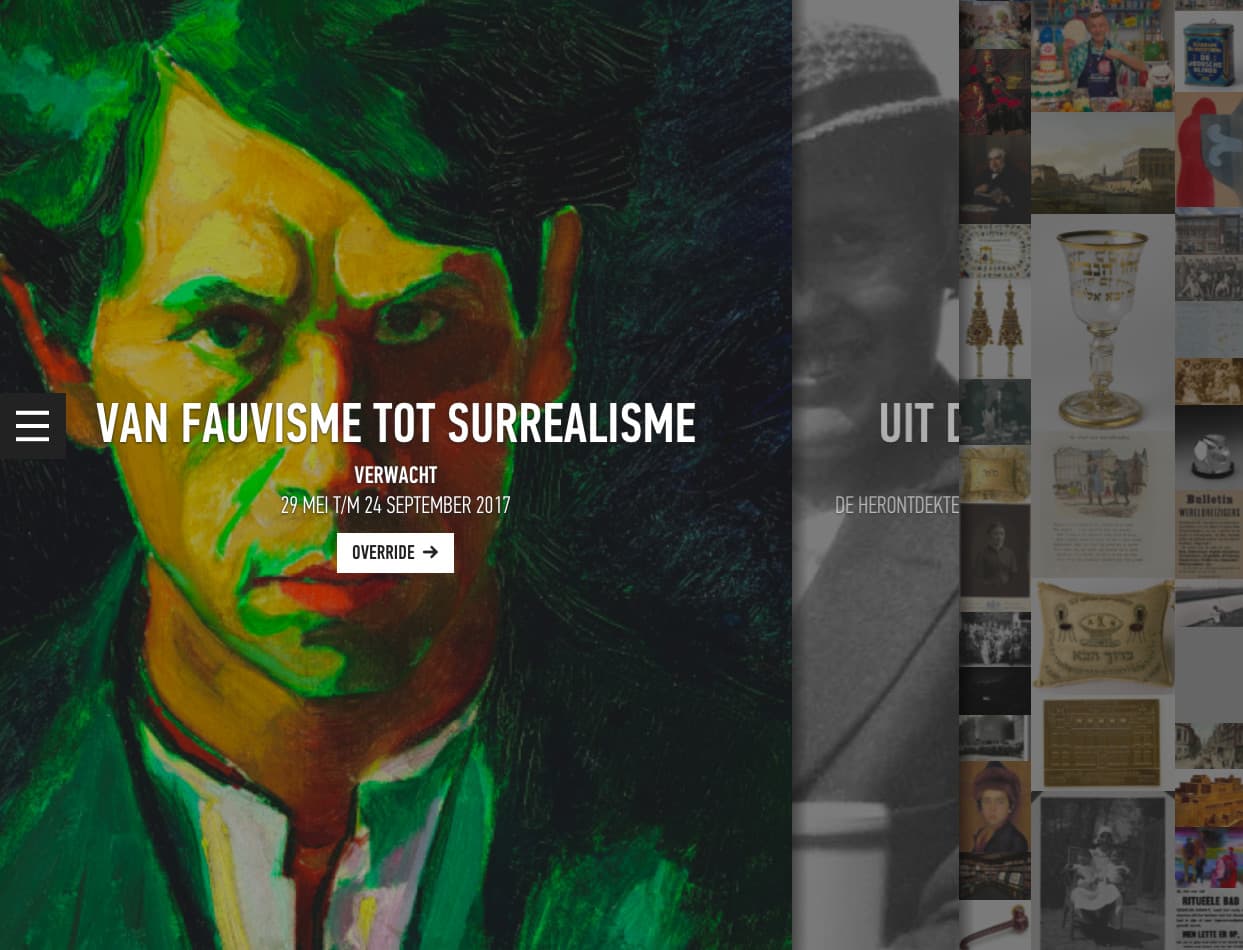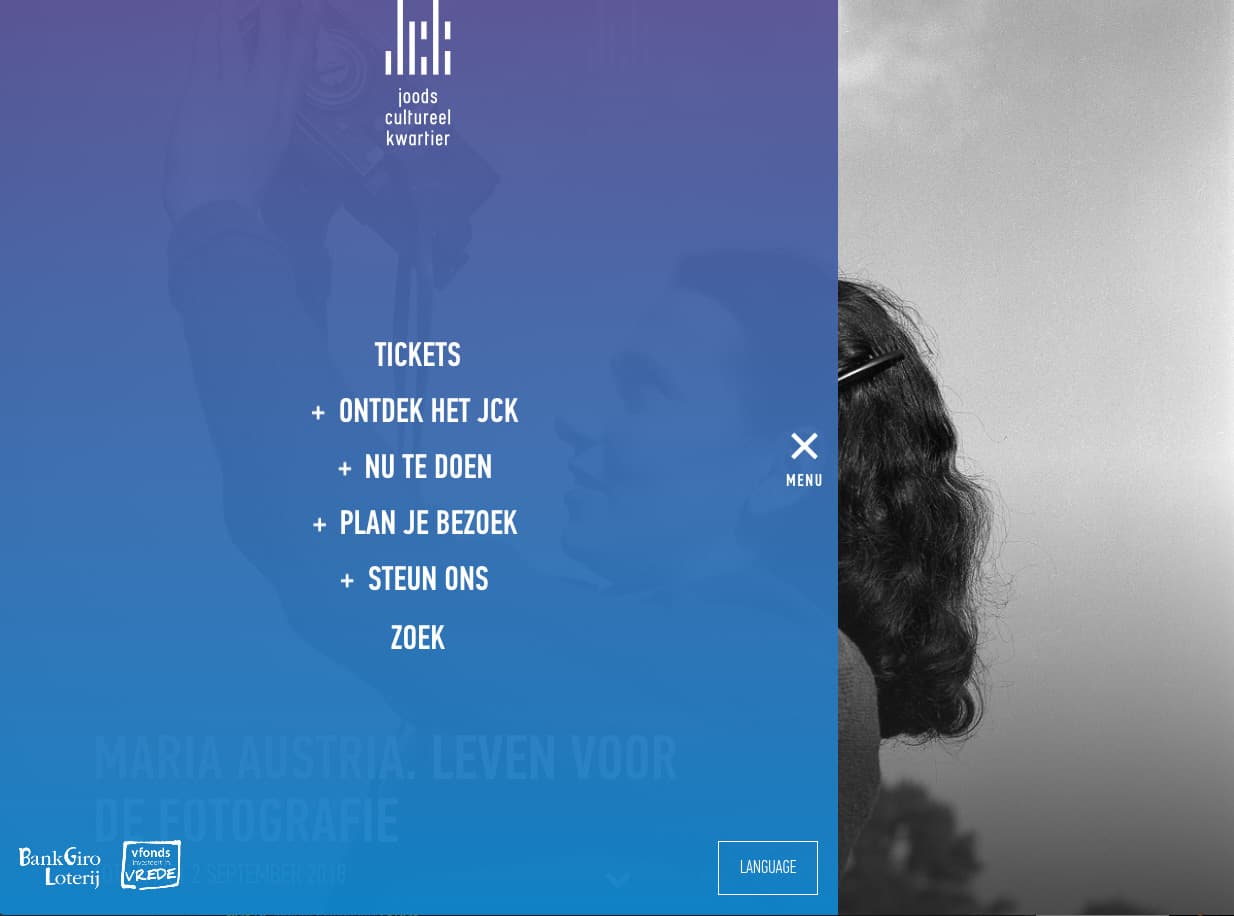Jewish Cultural Quarter
The new website I built in 2017 for the Jewish Cultural Quarter (Joods Cultureel Kwartier) was built in React.js, and one of the first headless CMS solutions in the Netherlands, certainly for a website of this scale. It was my final project as Lead Developer at Total Design, and I think the most ambitious. It was my first time working with React, and with Drupal 8. At the time there were no frameworks like Next.js, and there was no recipe book to handle the server-side rendering or page transitions.
Merging five websites into one
The Jewish Cultural Quarter had separate websites for the Historical Museum, the Portugese Synagoge, the Ets Haim library, the Children's Museum, and the Hollandsche Schouwburg. We created separate landing pages for each location, but brought everything under a single domain with a consistent look and feel.

Screenshot of jck.nl
Exposing the museum collection
While the website web developed, JCK migrated their cultural heritage database of documents, paintings, photographs, posters and religious artifacts to a new system with an open API, so we could access them through the website and use them in articles and longreads. The homepage had columns with key pieces from their collection.

The museum collection highlights, displayed in scrollable columns.
To present both specific objects and narratives from Amsterdam's Jewish Cultural Quarter, designer Thomas Pleeging envisioned a layered website encouraging fluid movement between exhibitions, longreads and items from the museum's vast digital collection. We created a standalone JavaScript application to present a unique frontend and leveraged Drupal 8’s REST API to manage the thousands of pages necessary to consolidate many websites into one.
Modular components
A website for a major museum will last between five and seven years, and redevelopment is often coupled with a new look and feel. What's often left behind in the redesign are the smaller applications built along the way for temporary exhibitions. I always encourage organizations to develop their style guides into reusable components, so the primary website can evolve alongside archival content. For the JCK, we built the menu as a separate module that could be used on both the primary website and for the Charlotte Salomon exhibition.

The menu was developed as an npm module to use across multiple projects.